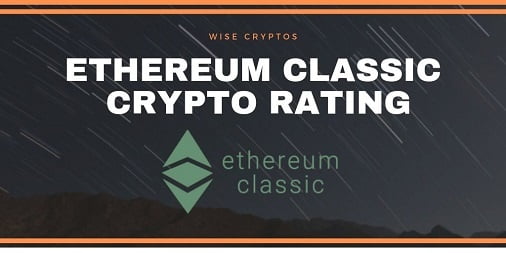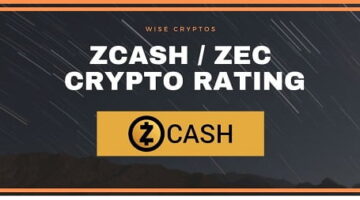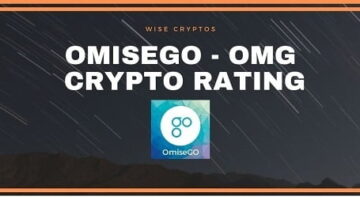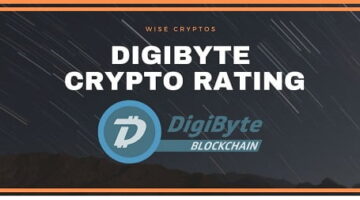Ethereum Classic Crypto Rating

Unlike most cryptocurrency ratings published online, the Wise Crypto ratings have nothing to do with the current or future price of the currency. Whether or not a crypto is over or undervalued or priced today is completely irrelevant. Our research focuses on the sustainability of each project, the security, the use case, decentralisation, environmental impact, the technology, the scalability and the developers and teams behind the projects.
Top Crypto Casinos List:
See all crypto casinos
Ethereum Classic (ETC) Rating= 140/1000
Technology (0 to 300) = 40
- Speed (0 to 50) = 0
The average block time on the ETC network is 10 minutes, but that’s not guaranteed as sometimes it can take up to an hour to confirm. This transaction speed is quite slow and may deter its usability. Transactions per second are around the 15 tps mark.
Kraken however lists average deposit times for ETC at a whopping 1 WEEK due to the necessary 43,200 confirmations, perhaps due to all the hacks ETC has undergone.
- Transaction Cost (0 to 50) = 40
The average transaction fee on the ETC platform is 0.00028ETC (USD 0.0013). This is much cheaper compared to Bitcoin’s transaction fee depending on the size of the transaction, network congestion as well as other factors.
- Scalability (0 to 50) = 0
Unlike Ethereum 2.0. ETC suffers from immense scalability problems attributed to the use of proof-of-work (PoW) consensus mechanism, also known as mining. While PoW can achieve an ok level of security and value (if all goes well), it doesn’t scale to handle increased transactions. Nonetheless, ETC does not necessarily need to scale at the same rate as Ethereum because it has a small community. There are also plans for ‘sharding’ upgrades to enable the platform to scale even more.
- Environmental Impact (0 to 50) = 0
ETC, just like Bitcoin, employs PoW consensus, meaning that it can be mined and therefore has some impact on the environment in terms of the electricity consumed. However, unlike Bitcoin, ETC, requires a lower amount of hashing power. Therefore, the amount of electricity consumed is a little lower, resulting in less impact.
- Reliability (0 to 50) = 0
While ETC is often secure due to the use of PoW consensus, it’s not as scalable, which is a huge setback to its reliability status. Since ETC doesn’t scale adequately, it means that the platform cannot fulfill the needs of service consumers and enterprises who may need to process a high volume of transactions within a short time and at a low cost.
After the hacks ETC is becoming completely unusable and unreliable.
- Decentralization (0 to 50) = 0
ETC is purposely structured to inhibit any form of centralization to occur. The development responsibilities have been spread out among many different parties, which avoids the hidden centralization that other blockchains fall victim to. Should it become economical to do so however, mining pools can easily centralise due to the failings of POW technology.
After the hacks ETC looks like it has zero decentralization.
Security (-250 to 0) = -210
- 51% Attacks/Phishing Attacks/Double-Spending Attacks (-100 to 0) = -100
Since the Ethereum hard fork in July 2016 that saw the formation of ETC, the platform has been subject to various attacks that have painted the platform as being insecure. In January 2019, Ethereum Classic was subject to double-spending attacks that saw almost $500,000 Ethereum Classic coin stolen by forking its blockchain. 51% attack was used to execute the double-spending attack in which the attackers disrupted the Ethereum classic to spend the same money twice. As a result, Ethereum Classic transactions were halted by Coinbase following signs of the attack. Also, in June 2017, Classic Ether Wallet was hacked following phishing attacks. These attacks have substantially reduced the community’s confidence towards the project.
- Potential for Being Banned (-100 to 0) = -60
ETC has the minimal potential of being banned as it has adhered to the laid down regulations. Additionally, the network has positioned itself to serve various needs in the cryptocurrency community. In fact, it can be argued that the integrity of ETC far exceeds that of ETH because of the philosophy followed by its community. The biggest obstacle ETC faces however is with the out-dated proof of work technology which has the potential to be banned due to environmental factors.
- Network Vulnerabilities (-50 to 0) = -50
The 51% attack on the Ethereum network exposed some critical vulnerabilities on the network. The most common critical vulnerability on the network is the deep chain reorganization, which ultimately leads to double-spending attacks.
Use Case (0 to 500) = 250
- Initial Main Use Case (0 to 100) = 40
ETC came into existence following the hack of the decentralized autonomous organization (DAO). The Ethereum Classic aims to use smart contracts to construct a blockchain platform that enables developers to build decentralized applications (dApps). It achieves this by providing a decentralized Turing-complete virtual machine, the Ethereum Virtual Machine (EVM), which can execute scripts using an international network of public nodes.
- Mainnet (0 to 200) = 200
Ethereum Classic went mainnet in July 2016 after the DAO hack that saw 3.6 million Ether stolen. After a vote, it was decided that a hard fork should be implemented in the Ethereum code. The Ether taken in the exploit was also to be moved to a new smart contract through which it would be restored to the owners.
Ethereum Classic came into existence when some members of the Ethereum community rejected the hard fork on the grounds of “immutability”, the principle that the blockchain cannot be changed. Hence, they decided to keep using the unforked version of Ethereum. The first Ethereum Classic block that was not included in the forked Ethereum chain was block number 1,920,000, which was generated by Classic miners on July 20, 2016
- Additional Use Cases (0 to 100) = 0
Ethereum Classic also provides a token called classic Ether (ETC). This token can be traded on crypto exchanges and stored in cryptocurrency wallets. Gas, on the Ethereum Classic network, is an internal transaction pricing mechanism that senders of a transaction will need to pay in order to execute an operation on the blockchain. Gas functions as an incentive mechanism to encourage participant nodes to process transactions. As well as this, gas is also used to prevent spam on the Ethereum Classic network, by making spam attacks too expensive to carry out. There is nothing unique about this however and no additional points can be awarded.
- Additional Working Products (0 to 100) = 10
The developer behind ETC, known as Ethereum Classic Labs, has collaborated with Ethereum Foundation, Akomba Labs, Kyber Network, POA Network, and Metronome to develop products to enhance blockchain interoperability. The products are:
- OpenRPC: Json-RPC Specification defining a standard for all blockchains,
- Metronome: Cryptocurrency built for maximum portability and endurance
- peaceBridge: ETC — ETH bridge that uses co-signed chains of custody to verify transactions across the two chains
- Tokenbridge: ETC — ETH bridge that uses wrapped Ethereum Classic
Core Team, Partnerships & Developers (0 to 200) = 60
- Core Team & Developers (0 to 100) = 40
Four independent teams are working on Ethereum Classic, including the IOHK team led by Charles Hoskinson, one of the founders of the Ethereum Foundation, which is known for the Cardano project. Also, the guys from EthCore, led by Gavin Wood, the former co-founder of the Ethereum Foundation and the author of Parity, as well as the ETC Dev team and Ethereum Commonwealth are involved in the development. All of these organizations make up a mighty team of developers that can lead ETC to success
- Partnerships (0 to 100) = 20
To spur cryptocurrency growth, ETC has partnered with various organizations. This includes social media dApp iZbreaker, blockchain infrastructure developer Second State, London-based investment group for digital token capital markets-North Block Capital, and UTRUST among other reputable institutions. With such partnerships, ETC can be used as an alternative payment method to fiat currencies.
There are no ETC casinos or Ethereum Classic Casinos. See all Ethereum casinos here.
Relevant news

Zcash Crypto Rating
Unlike most cryptocurrency ratings published online, the Wise Crypto ratings have nothing to do with…

Algorand Crypto Rating
Unlike most cryptocurrency ratings published online, the Wise Crypto ratings have nothing to do with…

Voyager (VGX, Ethos, BQX) Token Crypto Rating
Unlike most cryptocurrency ratings published online, the Wise Crypto ratings have nothing to do with…

OmiseGo Crypto Rating
Unlike most cryptocurrency ratings published online, the Wise Crypto ratings have nothing to do with…

MaidSafeCoin / SafeCoin Crypto Rating
Unlike most cryptocurrency ratings published online, the Wise Crypto ratings have nothing to do with…

DigiByte Crypto Rating
Unlike most cryptocurrency ratings published online, the Wise Crypto ratings have nothing to do with…
